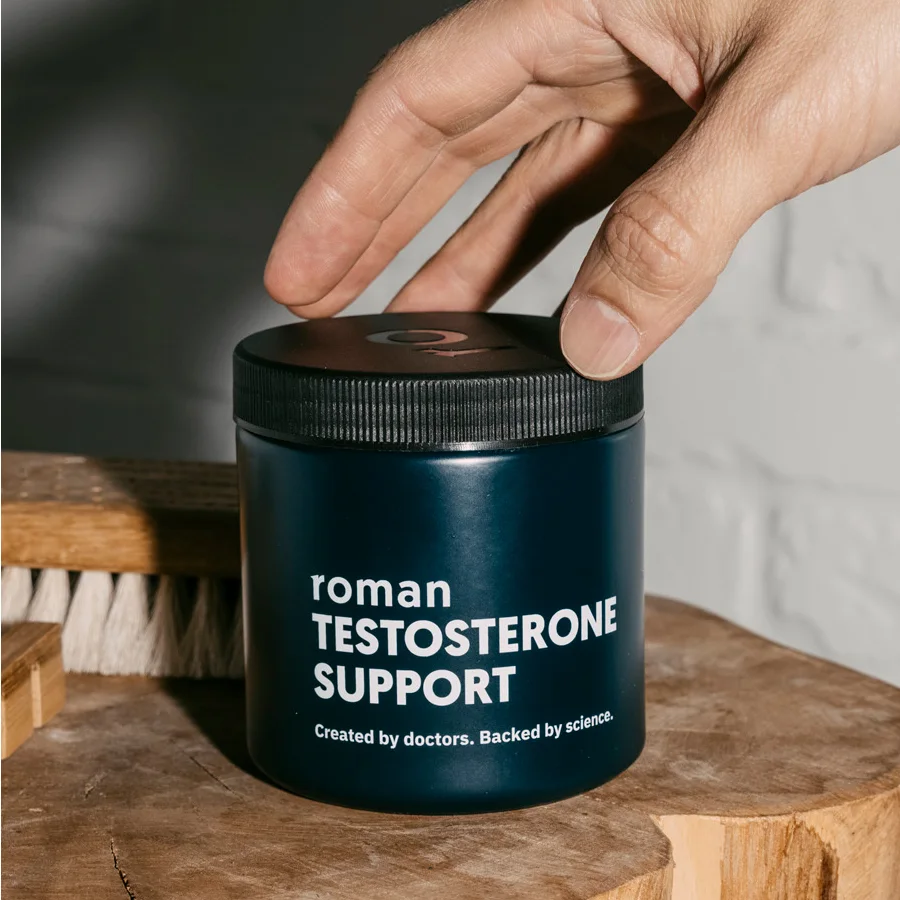Here's what we'll cover
Here's what we'll cover
Here's what we'll cover
Although testosterone is commonly associated with men, all people produce testosterone and rely on the hormone for many bodily processes. And since all people produce testosterone, all people can also experience frustrating symptoms when testosterone levels are out of balance. However, symptoms of high and low testosterone present differently depending on a person’s sex assigned at birth.
So, what are normal levels of testosterone? The answer is it depends. Continue reading to learn more about healthy ranges of testosterone, symptoms of high and low testosterone, and more.
Testosterone levels in women
Unfortunately, not enough research has been conducted on testosterone in women to establish a universally accepted “normal” range. Women’s bodies naturally produce significantly less testosterone than men’s do. For women who are not in menopause, circulating levels of testosterone typically fall between 20 and 60 ng/dL (Longcope, 1986).
Low testosterone in women
In women’s bodies, testosterone is produced in the ovaries, adrenal glands, and by conversion in other places of the body. Similar to a normal testosterone range, low testosterone in women hasn’t been thoroughly studied. Testing testosterone in women is not common, and there’s no formal diagnosis of testosterone deficiency or low testosterone. Symptoms of low testosterone in women may include (Wierman, 2014):
Decreased sexual desire
Decreased sexual sensitivity
Decreased arousal and ability to orgasm
Fatigue
Some women—particularly postmenopausal women with female sexual interest/arousal disorder—might benefit from short-term testosterone therapy for increasing libido (Wierman, 2014; Davis, 2016). However, we don’t fully understand the long-term safety and effects of testosterone therapy on increasing sexual desire in women.
High testosterone in women
High testosterone in women, or hyperandrogenism, can be caused by polycystic ovarian syndrome (PCOS), the most common hormone disorder in women. Signs of high testosterone in women include (Rasquin Leon, 2021):
Hair loss on the scalp
Excess facial and body hair
Growth of the Adam’s apple, deepening of the voice, and clitoral enlargement may also occur. These symptoms could also be caused by a tumor of the ovaries or adrenal glands and should be investigated immediately.
Testosterone levels in men
Exact numbers for “normal” testosterone levels vary, but estimates typically range from 300 to 1000 nanograms per deciliter (ng/dL), depending on what lab processes your sample or who you ask. According to the American Urological Association, a testosterone value below 300 ng/dL indicates low testosterone (Mulhall, 2018). But healthcare providers might still treat someone with slightly higher T levels if the signs and symptoms are typical of low T.
Low testosterone in men
Men naturally produce less testosterone as they age. Testosterone levels decrease by 1–2% each year, starting at around 40 (Miah, 2019). Other causes of low testosterone may include taking certain medications (including steroids or opioids), obesity, infections, and more. Symptoms of low T in men include (Sizar, 2021):
Low sex drive (libido)
Decreased muscle mass
Reduced semen volume
Sleep problems, like sleep apnea
High testosterone in men
High testosterone in men does not usually occur naturally. The most common cause of high testosterone is taking too high a dosage of prescribed testosterone or abusing anabolic steroids. Symptoms of high testosterone in men include (Ganesan, 2021):
Acne on the face or body
Gynecomastia (male breast tissue growth)
Worsening of sleep apnea
Fluid retention
Testicular shrinkage
Low sperm count
Increase in red blood cells (erythrocytosis)
Testosterone levels fluctuate
Testosterone levels naturally fluctuate throughout the day. Testosterone is highest in the morning and drops as the day progresses. For this reason, most healthcare providers require two blood tests on two different mornings to diagnose low T (Kanakis, 2019).
What factors impact testosterone levels?
In addition to regular daily fluctuation, testosterone levels depend primarily on three factors:
Age
Genetics
Existing medical conditions
For men, some research supports that testosterone levels peak in the late teens or early 20s (Kelsey, 2014).
No matter the cause, high or low testosterone can cause frustrating symptoms that impact your sex drive, energy, and overall health (for all people). If you suspect your testosterone levels may be too low or too high, visit a healthcare provider. They can help you test your levels and develop a treatment plan.
DISCLAIMER
If you have any medical questions or concerns, please talk to your healthcare provider. The articles on Health Guide are underpinned by peer-reviewed research and information drawn from medical societies and governmental agencies. However, they are not a substitute for professional medical advice, diagnosis, or treatment.
References
Davis, S. R., Worsley, R., Miller, K. K., et al. (2016). Androgens and female sexual function and dysfunction –findings from the fourth international consultation of sexual medicine. Journal of Sexual Medicine, 13 (2), 168-78. doi: 10.1016/j.jsxm.2015.12.033. Retrieved from https://pubmed.ncbi.nlm.nih.gov/26953831/
Ganesan, K., Rahman, S., & Zito, P. M. (2021). Anabolic steroids. StatPearls . Retrieved on Jan. 25, 2022 from https://www.ncbi.nlm.nih.gov/books/NBK482418/
Kanakis, G. A., Tsametis, C. P., & Goulis, D. G. (2019). Measuring testosterone in women and men. Maturitas , 125 , 41–44. doi:10.1016/j.maturitas.2019.04.203. Retrieved from https://pubmed.ncbi.nlm.nih.gov/31133215/
Kelsey, T. W., Li, L. Q., Mitchell, R. T., et al. (2014). A validated age-related normative model for male total testosterone shows increasing variance but no decline after age 40 tears. PLoS ONE, 9 (10), e109346. doi:10.1371/journal.pone.0109346. Retrieved from https://www.ncbi.nlm.nih.gov/pmc/articles/PMC4190174/
Longcope, C. (1986). Adrenal and gonadal androgen secretion in normal females. Clin Endocrinol Metab. Clinics in Endocrinology & Metabolism, 5 (2), 213–228 . doi:10.1016/s0300-595x(86)80021-4. Retrieved from https://pubmed.ncbi.nlm.nih.gov/3013468/
Miah, S., Tharakan, T., Gallagher, K. A., et al. (2019). The effects of testosterone replacement therapy on the prostate: a clinical perspective. F1000Research , 8 , F1000 Faculty Rev-217. doi:10.12688/f1000research.16497.1. Retrieved from https://www.ncbi.nlm.nih.gov/pmc/articles/PMC6392157/
Mulhall, J. P., Trost, L. W., Brannigan, R. E., et al. (2018). Evaluation and management of testosterone deficiency. The Journal of Urology, 200 (2), 423-432. Retrieved from https://www.auajournals.org/doi/10.1016/j.juro.2018.03.115
Rasquin Leon, L. I., Anastasopoulou, C., & Mayrin, J. V. (2021). Polycystic ovarian disease. StatPearls . Retrieved on Jan. 25, 2022 from https://www.ncbi.nlm.nih.gov/books/NBK459251/
Sizar, O. & Schwartz, J. (2021). Hypogonadism. StatPearls . Retrieved on Jan. 25, 2022 from https://www.ncbi.nlm.nih.gov/books/NBK532933/
Urology Care Foundation. (n.d.). What is low testosterone? Retrieved on Apr. 24, 2020 from https://www.urologyhealth.org/urologic-conditions/low-testosterone
Wierman, M. E., Arlt, W., Basson, R., et al. (2014). Androgen therapy in women: a reappraisal: an Endocrine Society clinical practice guideline. Journal of Clinical Endocrinology and Metabolism, 99 (10), 3489-510. doi: 10.1210/jc.2014-2260. Retrieved from https://pubmed.ncbi.nlm.nih.gov/25279570/










